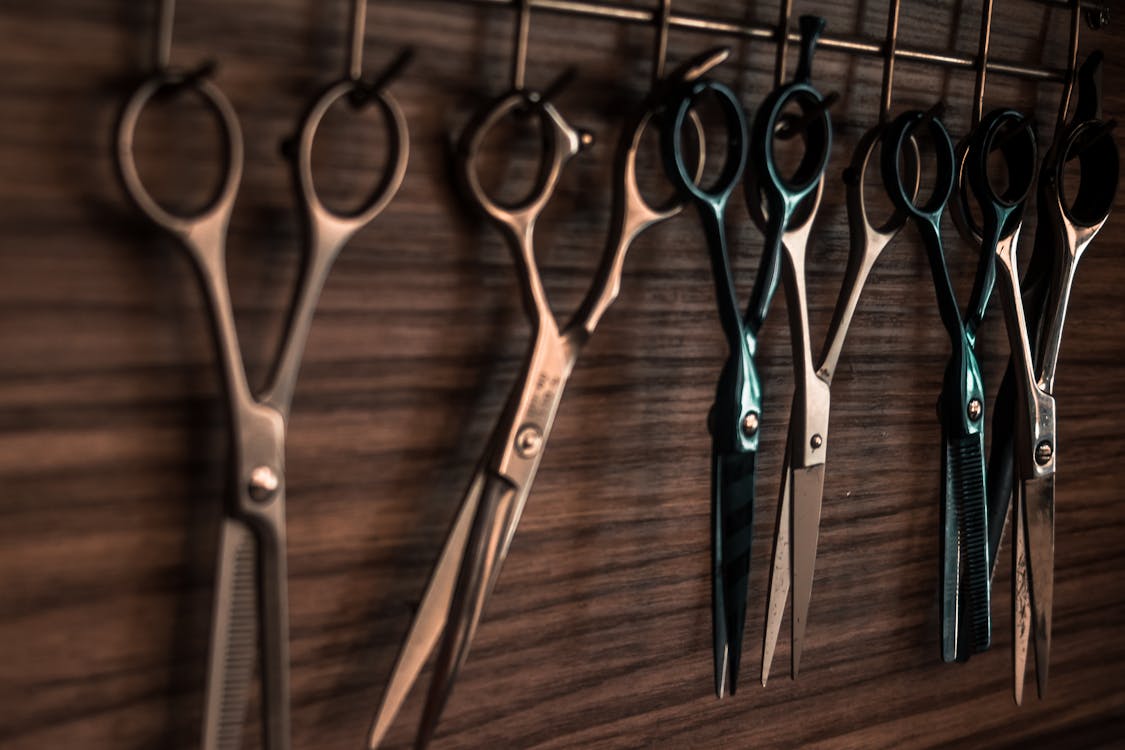Clipper blade sharpening for Groomers
Scissor sharpening near me Specialized for Vets
As a professional cutler you are aware of how important it is to have sharp knives. Not only is it a way to ensure that your work is effective and accurate, but it also assists in preventing injuries. This is where honing the steel is essential. Honing steel is a vital tool for anyone who is a serious butcher or chef, but precisely what is this tool? What is the reason it is so vital to your knife proficiency? This article will examine these and other questions in our discussion of the benefits of honing steel as well as how to use it properly.
What is honing?
Honing steel (also called sharpening steel) is a long metal rod with a ridged, smooth surface. It can be utilized to sharpen and keep the edge of knives. It is composed of two components which are the rod itself and the handle, which is home to a secure grip for easy handling. The rod's body has lines that extend lengthwise across its body. These grooves create an edge as the knife is passed across them. When honing steel is used properly, it produces an ultra-sharp edge on the knife blade, which should last longer than were to make use of whetstones and electric sharpeners on their own (1).
What are the benefits of using honing steel?
One of the primary benefits of using honing steel is that it can help prolong the lifespan for your knife. When you regularly run your knives across the ridges of the honing steel, you can to keep them sharper for longer durations of time by aligning any edges that may have become jagged or dulled over time (2). This will save you time and money in the long run, as you don't have to purchase new blades every time! Also, because honing steel isn't as abrasive as other sharpening tools such as whetstones or grinders, it won't damage or wear out the blades as time passes (3).
Another benefit of using honing steel is its safety. when used correctly, it helps prevent accidental cuts from dull blades. It creates an edge that is razor-sharp each time you use it (4). When cutting through tough materials, dull blades can easily cause slips or nicks. Honing steels on a regular basis will keep blades sharp and decrease the chance of injury by an enormous amount.
How can I make use of my honing tool correctly?
Honing steels properly requires patience and accuracy; Here are a few easy steps to get started:
- 1.) Begin by holding your knife perpendicularly to the rod not against it, at approximately a 20-degree angle (5).
- 2) Move your blade gently along one side of the rod, alternating between steady movements until you reach the point; repeat this motion on the opposite side, applying gentle pressure with every motion (6).
- 3) Make sure to maintain an equal angle through every stroke. Too little angle can cause an ineffective edge, while excessive angle can cause damage to the blade (7).
- 4.) After both sides are completed equally, gradually move towards the base until all areas have been completed before repeating strokes from tip-to-base several times, depending on how sharp your blade's edge to be
- 5) Lastly, complete by wiping off any metal shavings with the help of a damp cloth, before placing them in a storage container to use in the future!
Conclusion
To sum up the point, honing steels are vital instruments for any user who is looking for the most precise edges on their knives, without causing unnecessary damage or wear and tear from the use of abrasive tools like whetstones and electric sharpeners. They'll not only reduce your costs over time due to extending blade life, but they also create a sharper and safer cutting experience every time you use them! Take care when using them and always practice patience and precision with each stroke--good luck!
Sharpening Serated Knives
Serrated knives come in handy for many different tasks that range from cutting vegetables to cutting through meats that are tough. However, if the serrations on the knife start to wear they're time to sharpen the blades. For that, you need a diamond sharpening steel. A diamond sharpening steel is a must-have instrument for the professional or home cook. It allows you to quickly and accurately sharpen not only straight-edge but also serrated knives as well as scissors.
The most effective method to sharpen your sharp knife is to use a diamond cutting edge stone. This type of stone is made from diamonds, and is extremely durable. The harder the stone, the sharper the blade. Diamonds can cut through any kind of material quickly. They are utilized to create jewelry , and are very expensive.
There are a variety of methods to sharpen your knife without having to spend hundreds of dollars. You can use a regular filet knife, a bench grinder, and even sandpaper.
There are many different kinds of stones that can be purchased at local hardware stores. Many prefer using Emery paper that is less expensive than a diamond stone. If you're looking to achieve the best results, you must consider a diamond.
What is a diamond-sharpening steel?
A diamond sharpening steel (also known as honing rod) is an indispensable tool to keep your kitchen knives in tip-top shape. It has a diamond abrasive surface, making it ideal for sharpening both straight-edged knives and serrated edges. The high-grit diamond surface can remove burrs as well as nicks from the blade edge while also realigning the fibers of metal so that they overlap perfectly when reattaching the edge of the blade. This ensures that the knife will keep its sharp edge longer than when using other types of sharpening stones or rods.
Utilizing the Diamond Sharpening Steel to Sharpen Serrated Knives
Sharpening serrated knives requires specialized methods that differ from those employed to sharpen straight-edged blades. Before you use your diamond sharpening steel ensure that you go through the instruction manual for your specific product because the directions could differ depending on the type of rod you have purchased.
- Step 1. First, you need to use an absorbent cloth to wipe away any food or other debris that may be on the blade. Next, you'll need the diamond sharpening tool to make the blade sharper.
Step 2. Place the handle of the diamond sharpening tool firmly in one hand and hold the serrated blade of your knife to its lengthwise surface at an angle between 20deg to 30deg from its lengthwise face (as illustrated in the figure 1). - Third step: Carefully slide the knife along its lengthwise sides in alternating backward and forward motions until all of its serrations have been brushed against it numerous times (as shown in Figure 2.). Do not force too much or too fast. This could cause damage to the edge of your knife and the surface of your honing rod!
- Step 4: After all of your knife's serrations have been brushed across it multiple times Repeat Step 3 over each serration until you are getting the results you want (as as shown on Figure 3).
- Five Steps: Finally, to top it off, give each individual serration one final brushing with light pressure and then clean off any residue left behind with a soft cloth before storing the items in a secure location!
Conclusion
Sharpening serrated knives is a bit of a hassle if you don't know how to do it; however when you use the correct techniques and proper care it's not difficult to keep these tools well maintained using just a few strokes with a high-quality honing rod like a diamond sharpening steel! Use these steps every time you're looking to smooth or alter the shape of your knife's edges. You'll be thankful you did!
More information:
Zdravje in Dom Kombuča shears sharpening knife cutting tools

